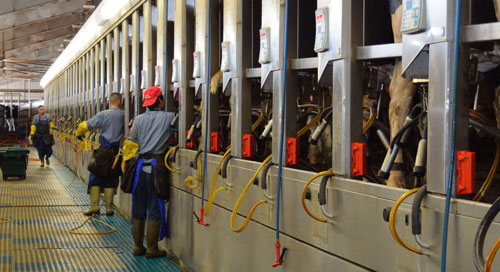
Even though Livestock Gross Margin-Dairy Insurance (LGM-Dairy) only first came on the scene in 2008, it quickly became an effective tool to minimize milk price risk for a small group of the nation's dairy producers. Overall, LGM-Dairy reduced price risk by 28 to 39 percent in the 13 states or dairy regions studied by USDA Economic Research Service. In making this assessment, researchers evaluated LGM-Dairy as if it had been in effect from 2001 to 2011. The areas studied by economists ranged from the Atlantic to the Pacific Oceans and to the Canadian and Mexican borders.
When looking at the full study, it is important to note the difference between lowering price risk and its impact on milk price margins at the producer level. While price risk was reduced by 28 to 39 percent, margins for those that used the product varied only (-1) to 2 percent compared to those producers that did not use LGM-Dairy. The gain on the producer level was the fact that milk checks were more stable from month to month.
One other potential impact looked at was whether or not LGM-Dairy induced farmers to produce more milk. To that end, ERS found that had the government-supported insurance product been more widely available, milk production could have gone up by a modest 0 to 3 percent.
The new farm bill will allow dairy producers to use either LGM-Dairy or the Dairy Margin Protection Program. Up until this point, LGM-Dairy has had a minimal impact on dairy because less than 2.5 percent of the nation's milk production was ever covered by the pilot project in a given year.
To read the entire study here.








